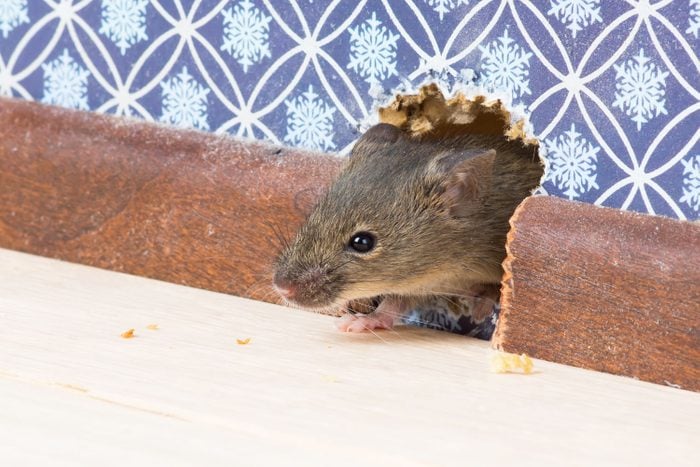7 Diseases Mice Can Carry
Updated: Nov. 06, 2023

Plus, tips on how to handle mice safely to prevent infection.
When temperatures drop, mice try to access your home for shelter, warmth and food. Unfortunately, these autumn pests don’t just cause property damage. They can spread dangerous and even deadly diseases via their urine and droppings.
This year, while you prepare to safeguard your home from burrowing rodents, read up on these seven common diseases mice can spread directly to humans, along with their signs, symptoms and potential treatments. Note that this is just a snapshot of the diseases mice can transmit. For a full list, consult the Centers for Disease Control and Prevention (CDC).
On This Page
Hantavirus
Hantavirus is an umbrella term for a series of rodent-carried diseases. Symptoms vary from minor to acute, but hantaviruses may cause headaches, fevers, and pain in the abdomen or back. Some hantaviruses can result in respiratory issues like Hantavirus Pulmonary Syndrome, or renal issues like Hemorrhagic Fever with Renal Syndrome.
Lassa Fever
Eighty percent of Lassa fever cases are benign, resulting in only headaches, general weakness and slight fever.
However, some serious cases can lead to deafness, respiratory issues, vomiting, facial swelling, acute pain throughout the body and even hemorrhaging from the gums, eyes or nose. Even worse, Lassa fever can cause organ failure, resulting in the deaths of one percent of those infected.
Leptospirosis
This bacterial disease is often asymptomatic or mild. However, if left untreated, it can cause kidney damage, meningitis, liver failure and respiratory problems. Those who suspect exposure should watch out for fever, chills, jaundice, muscle aches, rashes and diarrhea.
Lymphocytic Choriomeningitis (LCM)
LCM is a viral disease caused by infection with the lymphocytic choriomeningitis virus, or LCMV. The CDC warns: “[I]t is estimated that 5% of house mice throughout the United States carry LCMV and are able to transmit virus for the duration of their lives without showing any signs of illness.”
Stay vigilant by watching for fever, loss of appetite, malaise, muscle aches, nausea and vomiting. Eventually, these symptoms can escalate to muscle stiffness, meningitis, paralysis or hydrocephalus (increased fluid on the brain).
Monkeypox
While many people think of monkeypox as a sexually transmitted viral disease, rodents can also spread it. The most common symptoms are painful or itchy blisters that eventually scab over. Infected individuals may also experience fever, chills, swollen lymph nodes, exhaustion, muscle aches and respiratory symptoms.
Fortunately, monkeypox vaccines and tests are available. Most people recover within four weeks without medical intervention.
Salmonella
The CDC estimates salmonella bacteria causes about 1.35 million infections, more than 26,000 hospitalizations and 420 deaths per year. Most infections are caused by contaminated foods, but mice and other rodents can spread salmonella as well.
Symptoms include stomach cramps, diarrhea and vomiting, and may last up to one week. Fortunately, most people recover without medical intervention, and antibiotics are available if necessary.
Tularemia
This disease is predominantly carried by rabbits, hares and insects, but mice can become infected as well. Signs and symptoms vary depending on the mode of transmission.
If you inhale dust containing the organism, you may develop a cough or experience chest pain and difficulty breathing. If you eat contaminated food, you may notice a sore throat, mouth ulcers or tonsillitis. And if you handle a dead animal that’s infected, you may develop painful skin ulcers.
How to Stay Safe
To avoid infection with any of these diseases, it’s critical to prevent mouse infestations and handle mice extremely carefully.
Never leave food, trash or any potential nesting materials out in the open. Seal any holes or cracks mice can sneak through to get into your house. You can use peppermint oil to deter mice, or set up traps or bait stations to catch them.
If you see mouse urine or droppings near your food, throw it all away immediately. And when disposing of a dead mouse, always use proper protective equipment, including a mask and gloves.